Kathmandu was my first stop in Nepal and with this being my first new country of 2017 I was ready to hit the ground running! My first day there was a bit of an assault on the senses – traffic fumes mixing with incense, tout calls echoing through the honking, prayer flags if I looked up and souvenir shops bursting with treasure if I turned to either side.
I’ve already shared some of my first impressions of Kathmandu, so with that in mind, I thought I would structure this post more like a travel guide for anyone thinking of travelling there. Here’s a quick look at some of the places I enjoyed visiting, the restaurants I enjoyed eating at, and a few travel tips thrown in between:
Kathmandu City Guide: Top Things To Do, See, Eat, Drink & Experience in Kathmandu, Nepal!
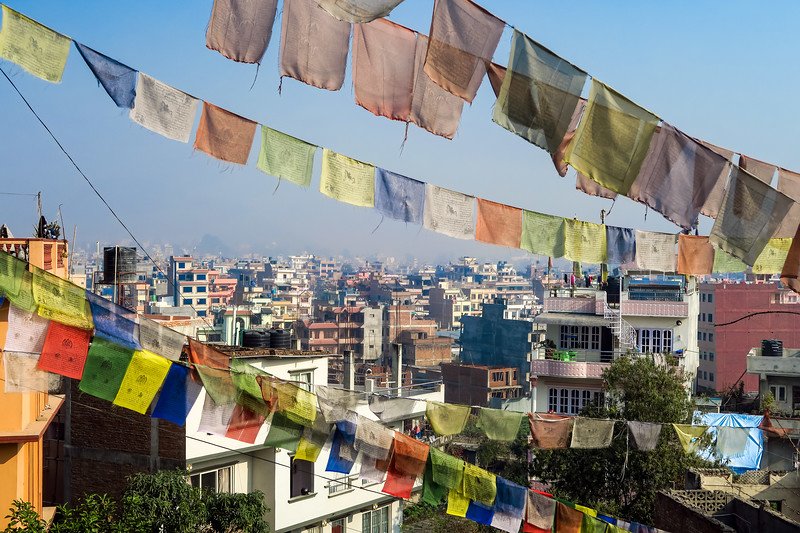
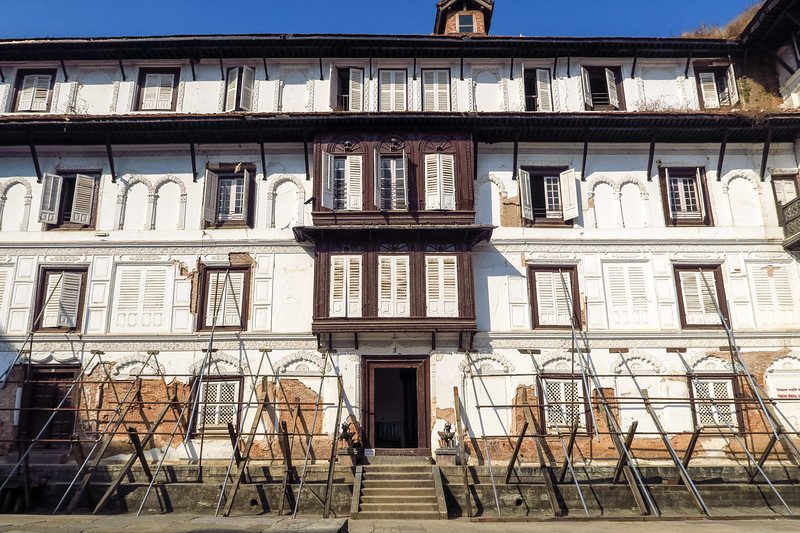
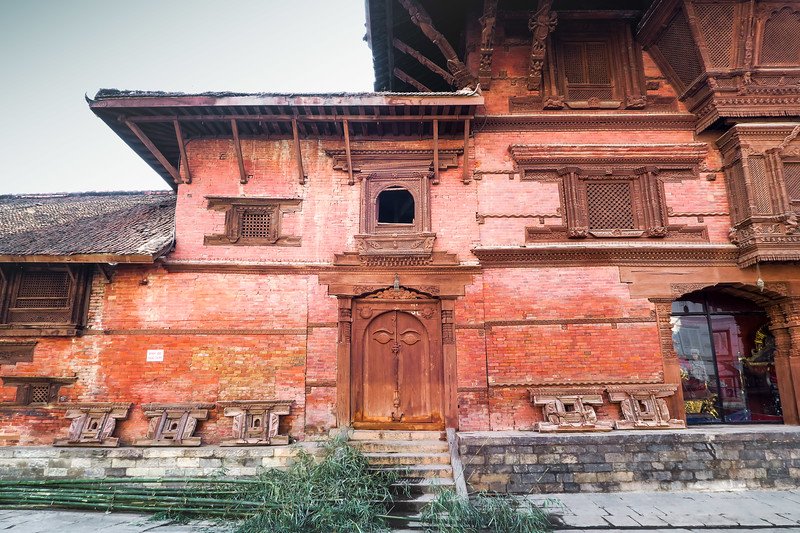

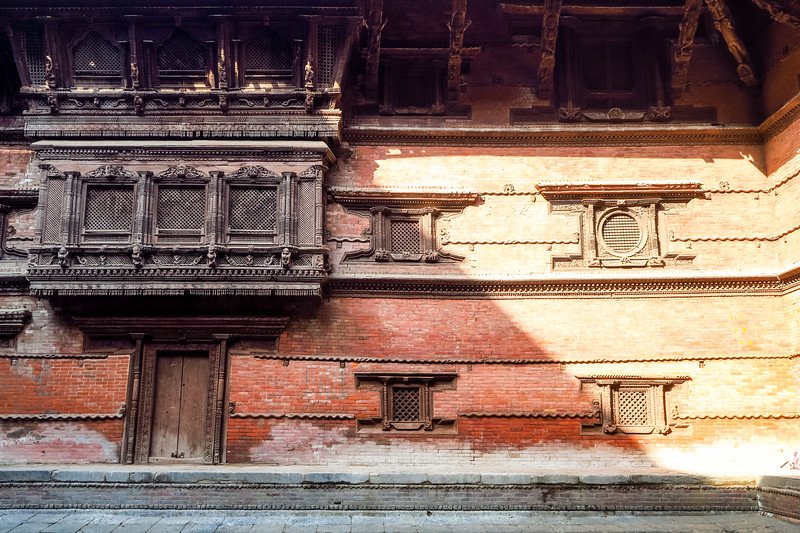
Places to visit in Kathmandu
There is no shortage of attractions in Kathmandu and I know I didn’t do them all – one girl can only fit so many temples into her schedule! – but here’s a look at some of the places I did visit:
Durbar Square
Durbar Square is the main attraction in Kathmandu; it is a complex featuring palaces, temples and shrines – both Hindu and Buddhist – with intricate wood carvings done by hand. Admission to the complex is 1,000 NPR (around $10) for a 1-day pass, though you can extend your pass free of charge at the Site Office. Note: you will need to bring your passport and a passport-sized photo with you in order to do so.
I found myself visiting Durbar Square almost a year after the 2015 earthquake and it was evident that restoration is going to be a slow and tedious process. Many of the sites were closed or blocked off, while others were being held up with bamboo sticks or scaffolding. You can still enjoy the structures and wander in some of the courtyards, but many buildings are not safe to enter and are therefore closed to the public.
You’ll meet guides offering their services next to the ticketing office and around the square, so if you want someone to show you around and share a bit of the history, this is something that can easily be arranged on the spot.
As a note, there are three Durbar Squares in the Kathmandu Valley: one is in Kathmandu and the other two are in nearby Patan and Bhaktapur. All three are UNESCO World Heritage Sites.
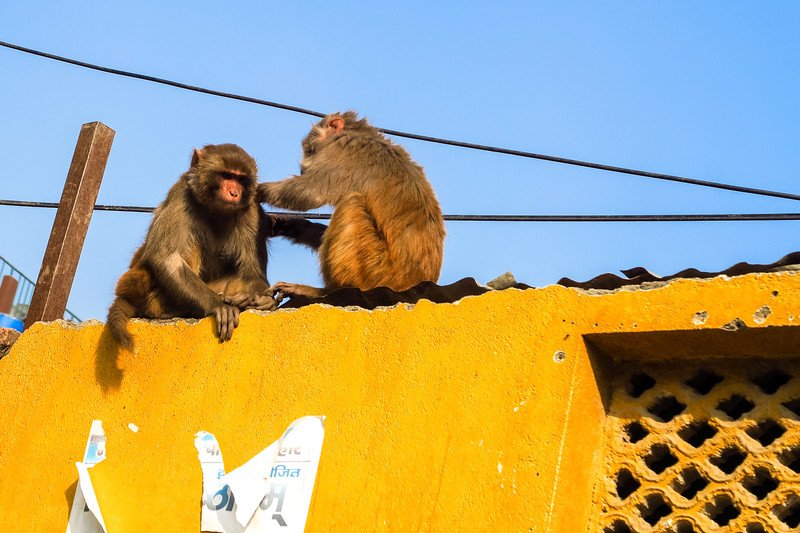
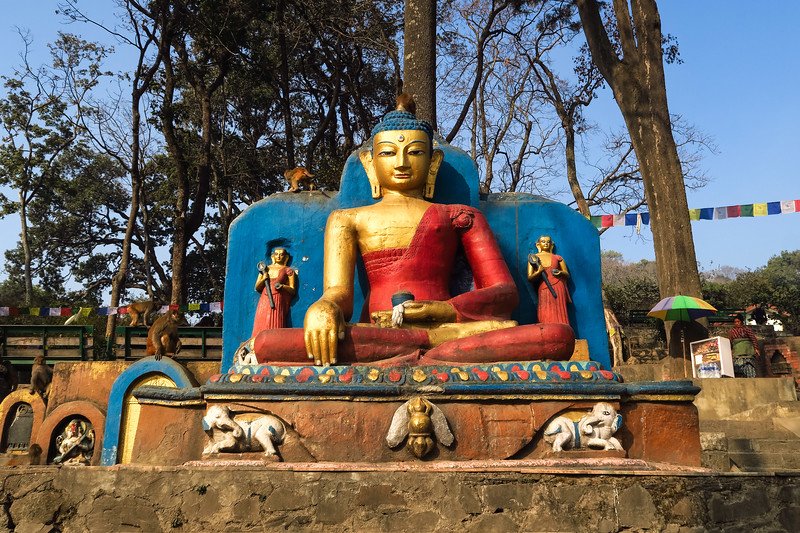
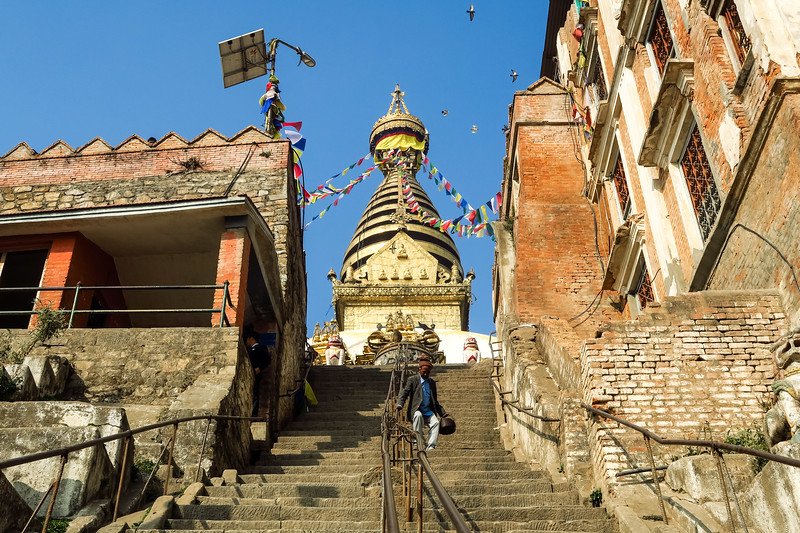
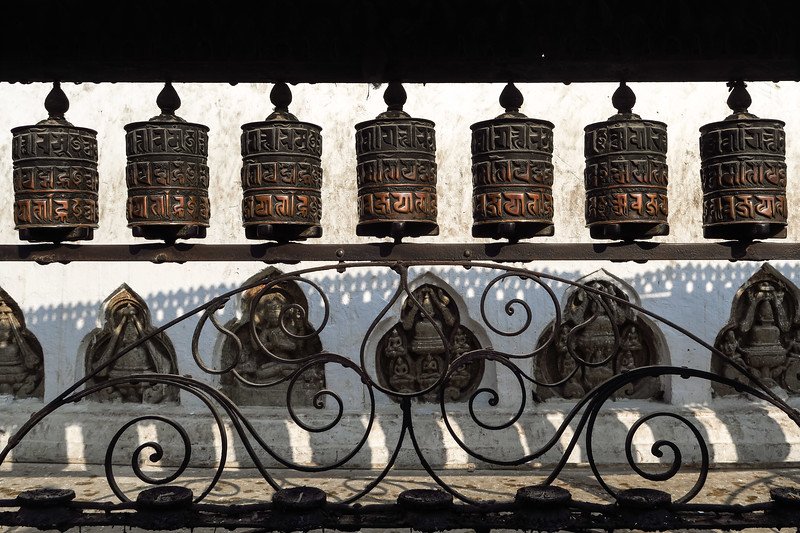

Monkey Temple
The Monkey Temple, also known as Swayambhunath is located on a hill overlooking the city. It’s a 350 step climb to reach the top and you’ll encounter plenty of monkeys along the way. Note: these monkeys are very confident and they are not afraid of humans, so beware of just how close you get to them!
At the top of the stairs there’s a ticketing booth where foreigners pay 200 NPR (about $2 USD) to enter. Inside you’ll find a stupa surrounded by shrines and temples. It’s an active place of worship so you’ll see people spinning prayer wheels and lighting candles, all while touts are trying to sell you prayer flags and metalware in the same space.
I tried walking from my hotel in Thamel and it was a 30 minute journey on foot through some residential areas and some rather muddy roads, so I’m not sure it was the most direct route. Another option would be to take a taxi to the base of the hill and then save your energy for the climb to the top.
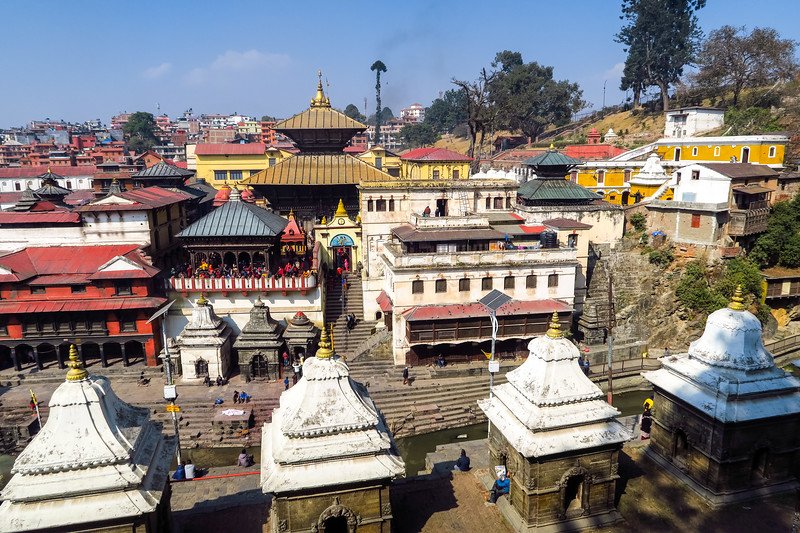
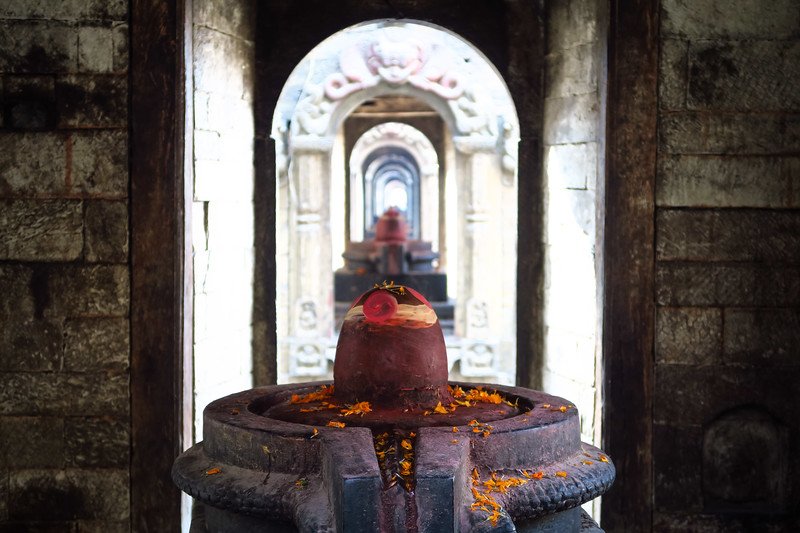
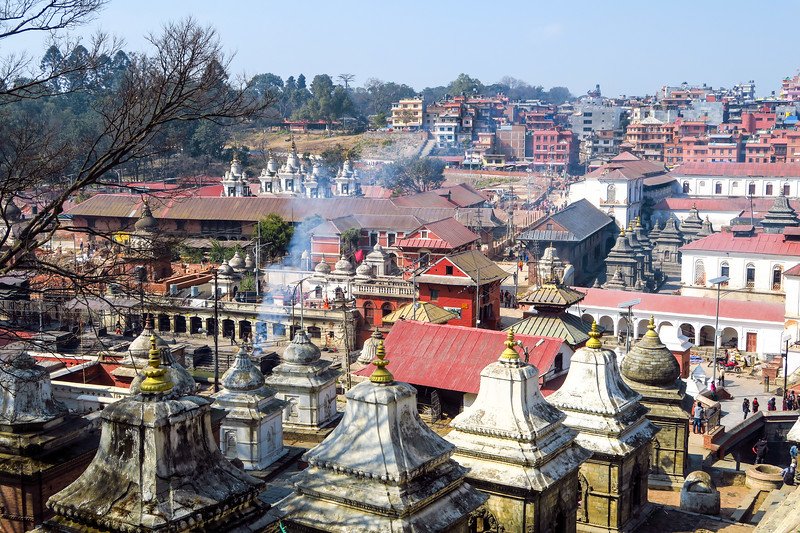
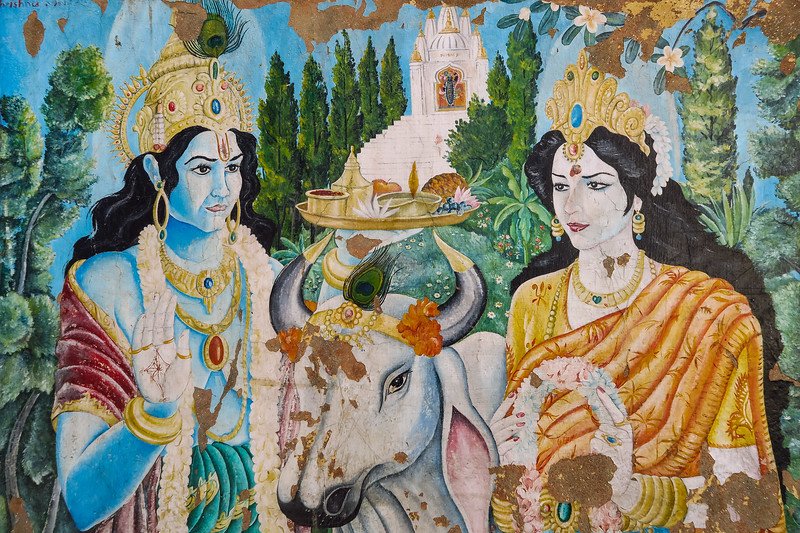
Pashupatinath Temple
This site is not one for the faint of heart. This Hindu temple sits on the banks of the Bagmati River, which connects to the Ganges, and as such it is considered a sacred place where many choose to be cremated. It is believed that if the body of the deceased is dipped into the river three times before cremation, this will break the cycle of reincarnation and allow the person to reach Nirvana.
Of course, I didn’t know any of this before arriving, so I thought I was just going to visit another temple. Once we arrived, paid the admission ticket of 1,000 NPR (around $10), and were approached by a guide, we learned that the main temple can only be accessed by Hindus, but we were able to tour the rest of the grounds, visit the shrines, and watch the cremations (not because we wanted to, but because they were happening right in front of us).
It feels strange being a spectator while families are mourning and bodies are burning, so it’s something to think about before you go. If you do decided to visit, I would recommend getting a guide as it can be a confusing place to navigate while trying to figure out exactly where you’re allowed to go.
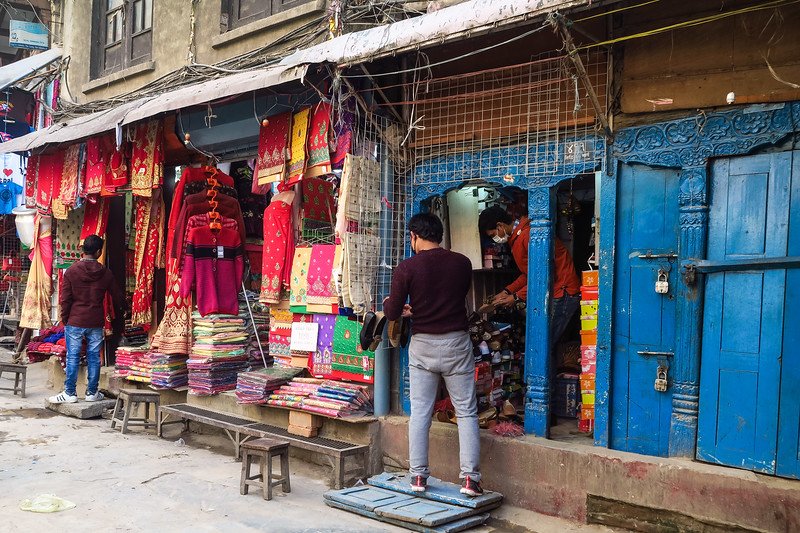
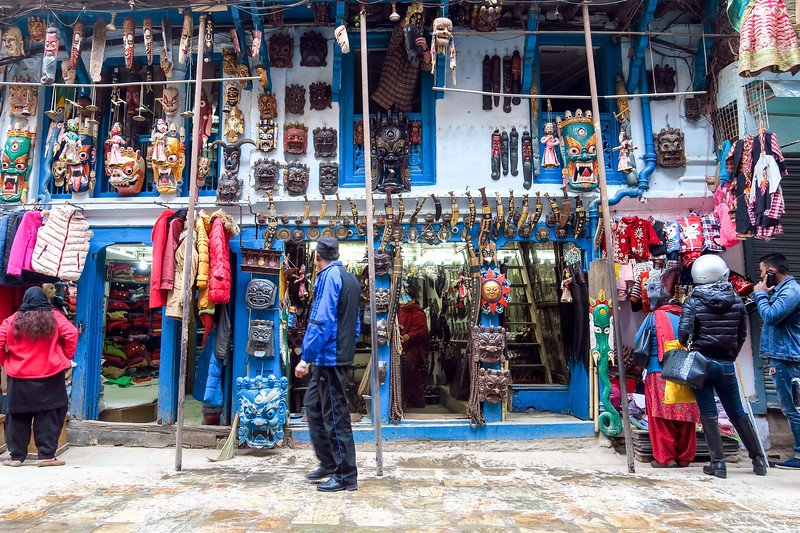
Indra Chowk Market
Indra Chowk is one of the liveliest markets I visited in the city. It is located northeast of Durbar Square and the area is lined with little shops featuring cashmere sweaters, metalware, paintings, singing bowls, puppets, prayer flags, beads, bangles, and all sorts of souvenirs imaginable.
That being said, aside from the shops geared at tourists, there are also plenty of stalls selling everyday items for locals, like bedding, backpacks, shoes, saris, cookware, and even fresh produce, so it really is a mix of everything.
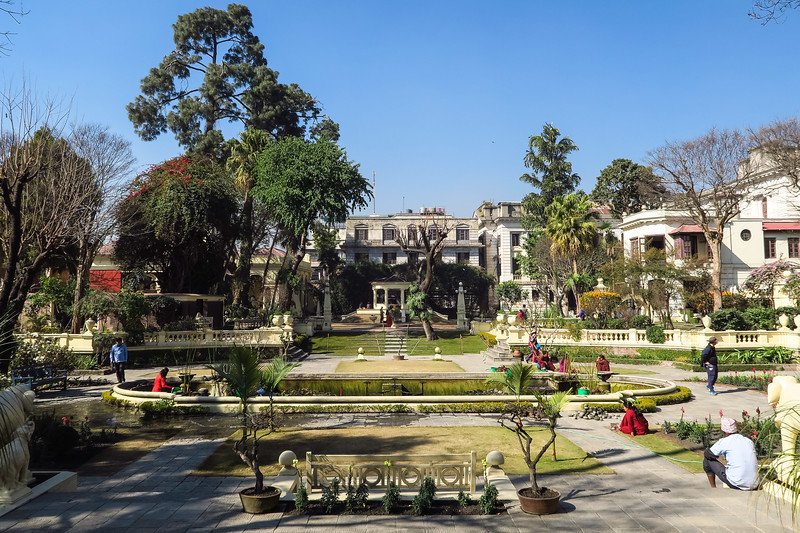

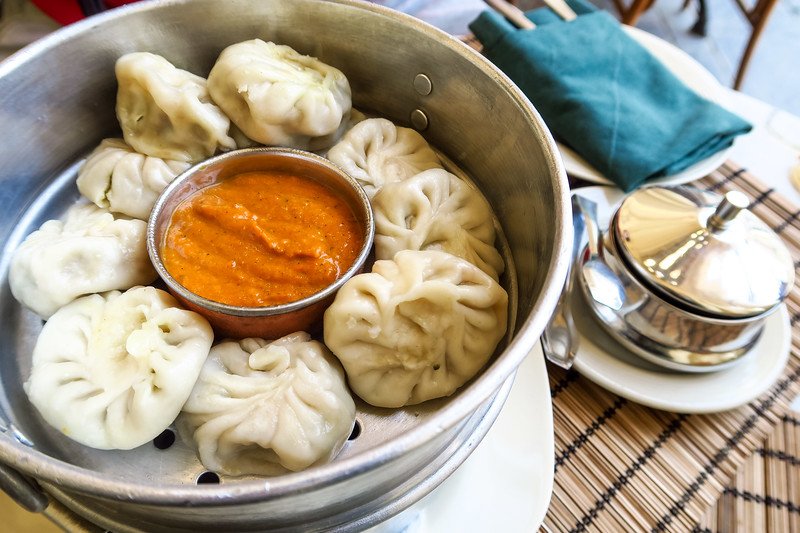
Garden of Dreams
This is a neoclassical garden that dates back to the 1920s and it is a little oasis in what is otherwise a very chaotic and congested capital. I visited in the middle of winter so it was a bit bare and dry, but I’ve seen photos taken in the summertime and it can be a beautiful place.
These gardens stood neglected for a long time, but in 2000 they were restored with the help of the Austrian government as part of a 6 year project.
There is a nice little restaurant on the grounds called the Kaiser Cafe, where you can enjoy a meal or a drink.
Where to eat in Kathmandu
With five whole days in Kathmandu I had plenty of time to sample lots of restaurants and revisit some of my favourites. Here’s a selection of places I enjoyed around Thamel:
Places
This was my absolute favourite restaurant in Kathmandu and I tried to go back at least once a day. Seating consist of low tables and lots of pillows and mats, the staff are incredibly friendly and great to chat with, and the food will blow your mind! I’d recommend ordering the pumpkin momos with chocolate and chilli sauce – instant hit! They also have the fastest Wi-Fi in town, so if you need to skype family or you want to stream a movie, this is a great place to do so.
Electric Pagoda
This is a really funky restaurant and bar with a hippie vibe. They have a quiet courtyard with tables and chairs, or you can eat in the covered area where they have low tables and lots of pillows. They have an extensive international menu; I went with their vegetarian enchilada and it was delicious.
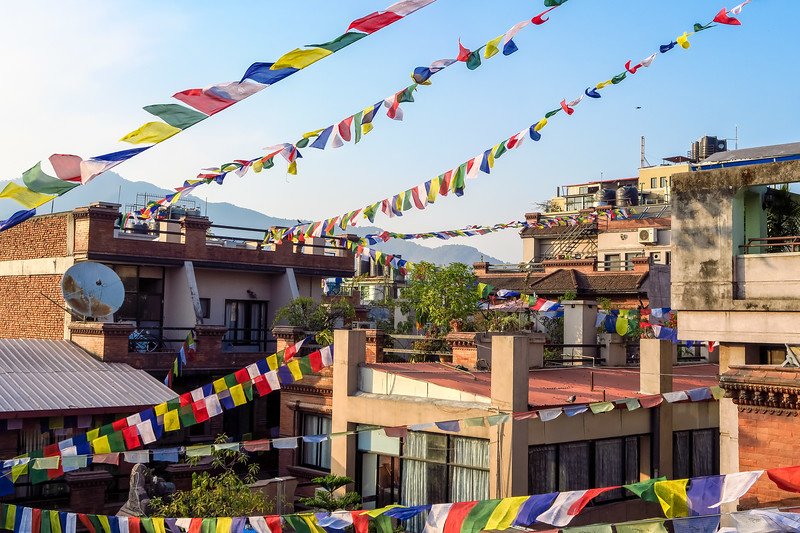
Forest to Plate
I ended up at this place completely by chance while wandering around Thamel in search of a rooftop terrace. This place specializes in salads and healthy dishes (they make a delicious beetroot and goat cheese salad with glazed walnuts), and it’s a nice place to relax while watching the sun set. They have a stupa on the rooftop and prayer flags are streamed all across so you can get some great pictures.
Pumpernickel
If you’re in the mood for a little something sweet, Pumpernickel serves up plenty of cakes, pastries and hot drinks. They have a nice little courtyard if you walk through to the end of the shop and the resident cat is really sweet and likes to be scratched (great for any pet lovers out there who are in need of some cat love!)
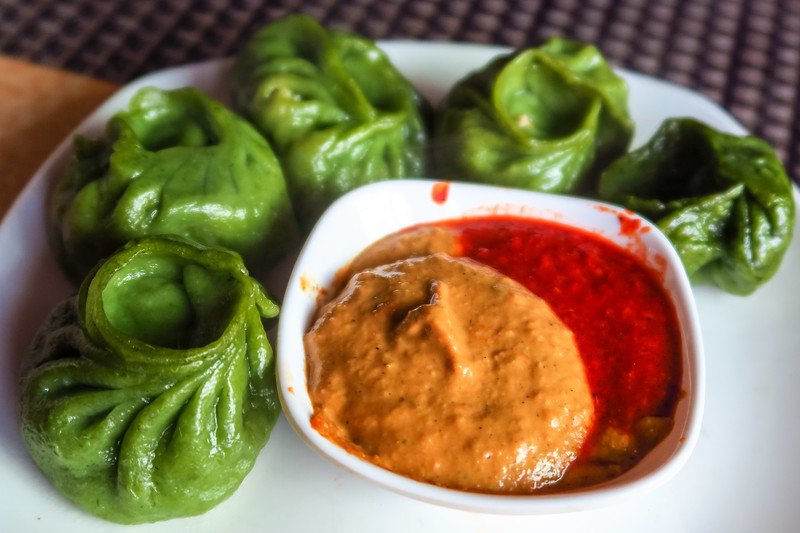
Momo Hut
Momos are the one dish that you’re going to eat plenty of while in Nepal. These dumplings have Tibetan origins, but they are pretty much one of the main staples of Nepali cuisine. The Momo Hut serves up 20 different types of momos; some of the fillings are rather strange (ostrich?) and others are divine (peanut butter and chocolate!), so if you want to sample a little bit of everything, this is a good place to hit up. You can order plates of 5 or 10.
Kaiser Cafe
This cafe is located inside the Garden of Dreams and it’s reminiscent of an Austrian coffee house. They serve up hot drinks (including Vienna coffee) as well as snacks and meals. I went with their veggie momos, because when in Nepal, but they also had a wide selection of European dishes. It’s a nice tranquil setting, perfect for a little break after a long morning of sightseeing.
Where to stay in Kathmandu
I really enjoyed Thamel, which is the most popular neighbourhood with travellers. It has a wide mix of hotels and guesthouses to fit all budgets, restaurants serving up international and local fare, travel agencies where you can book tours and onward travels, and a maze of shops where you can pick up souvenirs. It basically has everything you need.
I stayed at the Grand Hotel Kathmandu in the north end of Thamel. The rooms were spacious, clean and comfortable. I would call it a modest mid-range hotel. I also liked that they offered a free airport pick up and a buffet breakfast.
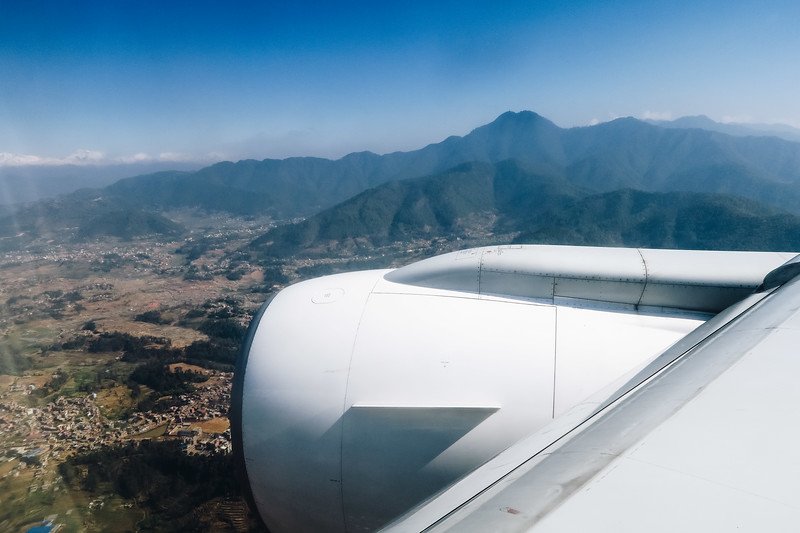
A few travel tips for Kathmandu
- Grab a front seat to the Himalayas. If you’re flying into Kathmandu and you luck out with clear weather, you can see the Himalayas and Mount Everest from the airplane window! I was flying westward coming from Bangkok, so I snagged a seat on the right-hand side of the plane and the views were amazing as we approached Kathmandu. Window seats are popular flying into Nepal, so if you want one, reserve yours in advance.
- Dealing with air pollution. One of the first things that struck me about Kathmandu is how dry and dusty it is. Combine this with car pollution and you’ve got the perfect combination for lots of sneezing and a scratchy throat. I noticed a lot of locals and travellers wearing face masks (these probably look a bit strange but are quite common in Asia), so that might be something to consider if you suffer from allergies or have a sensitive throat.
- Get outfitted for your trek. It seems most travellers passing through Kathmandu are either attempting Everest Base Camp or the Annapurna Circuit. Nepal is a great destination for hiking and there are no shortage of options ranging in length and level of difficulty. If you don’t feel like hauling all your trekking gear from home, there are places in town where you can buy or rent things like hiking poles, sleeping bags, and other gear. Just don’t forget to get your travel insurance before you begin your excursion!
- Exchanging money versus withdrawing. It was my experience that the ATMs in Kathmandu were either out of money (thats what the security guards kept telling me) or didn’t accept foreign cards, so I ended up exchanging money into NPR (Nepalese Rupee). Thamel has lots of exchange houses and they offer good rates, so bring some hard cash on you in case you encounter problems with your debit and credit cards.
- Carry TP and sanitizer. I found that establishments in Kathmandu were not the most generous with their toilet paper (as in often there was none!), so may want to buy a roll or two to carry on you. Same goes for hand sanitizer. And knock on wood, but it’s also a good idea to have some Loperamide/Imodium in case you experience some stomach problems.
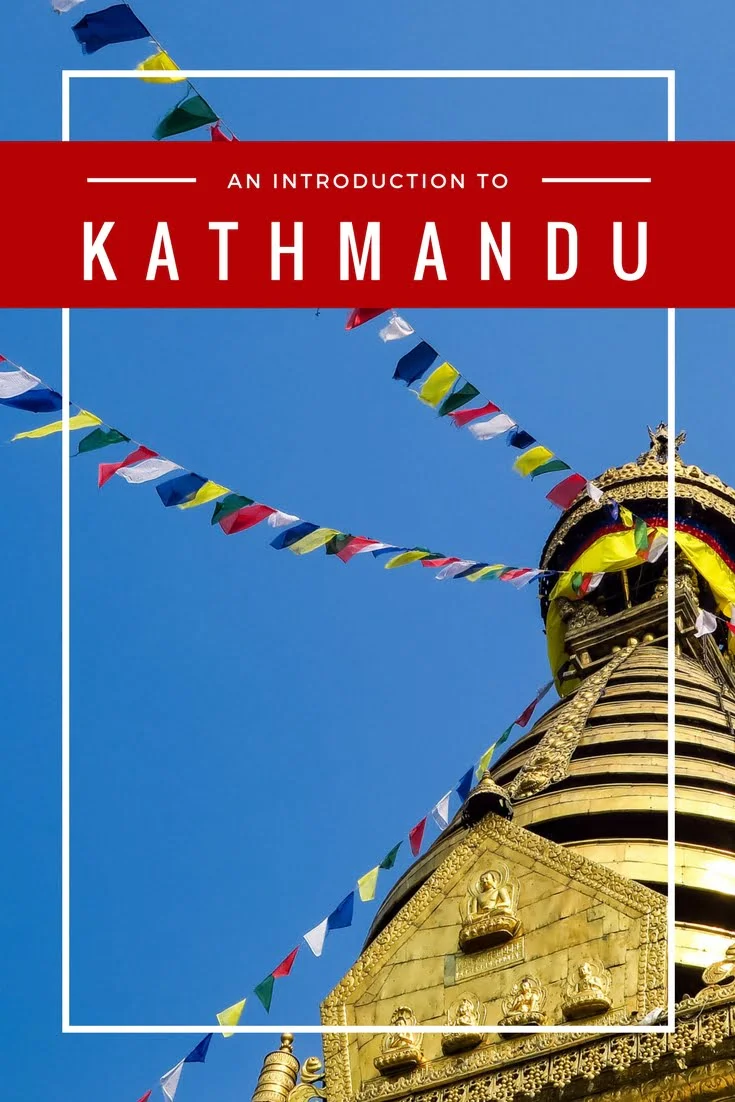
Kathmandu Trip Planner: Practical Tips, Smart Routes & Guide
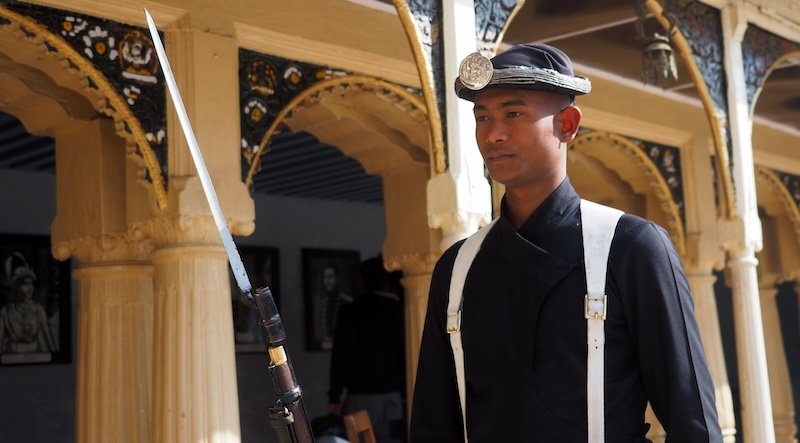
When To Visit Kathmandu (And What To Pack For Each Season)
- Autumn (Oct–Nov): Post-monsoon skies = crystal mountain views and comfy 10–24°C days. Peak trekking season and lots of festivals (Dashain, Tihar). Pack a light jacket, scarf, sunscreen.
- Spring (Mar–May): Warm days, rhododendrons blooming in the hills, occasional haze. Holi happens! Bring a sunhat, breathable layers, and a light rain shell.
- Winter (Dec–Feb): Chilly mornings/evenings (down to ~2–5°C), sunny afternoons. Hotels may not have central heating—pack a warm fleece, thermal layer, and cosy socks.
- Monsoon (Jun–Sep): Afternoon showers, lush countryside, fewer crowds in the city. Humid and warm—pack a quick-dry outfit, umbrella, and waterproof sandals. Roads can be muddy; build in wiggle room.
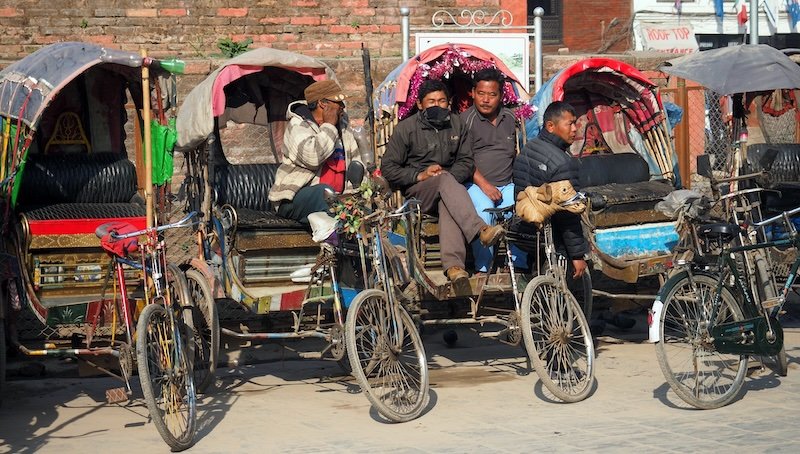
Getting Around: Kathmandu Transportation Guide
- On foot: Old quarters are walkable; allow extra time for cobbles, puddles and photo stops.
- Taxis: Plentiful. Ask for the meter; if not, agree a fare up front (short central hops often 300–600 NPR). Screenshot your destination on a map.
- Ride-hailing & taxis called by hotels: Handy and often fair-priced; ask your guesthouse to book if language is a barrier.
- Rickshaws: Fun for a short spin around Thamel/Asan—negotiate before you sit.
- Buses & micros: Cheapest but crowded; best for adventurous souls with time.
- Mountain flight to Everest: Early-morning departures on clear days—book the right-hand window if flying westward into KTM and you like views (hello, Himalayas!).
Transport Snapshot
| Option | Best For | Pros | Watch Outs |
|---|---|---|---|
| Walking | Old city lanes | Flexible, photogenic | Dust, uneven pavements |
| Taxi | Cross-town hops | Door-to-door | Confirm fare/meter |
| Rickshaw | Short joyrides | Fun, local vibe | Haggle first |
| Bus/Micro | Budget travel | Super cheap | Crowded, slower |
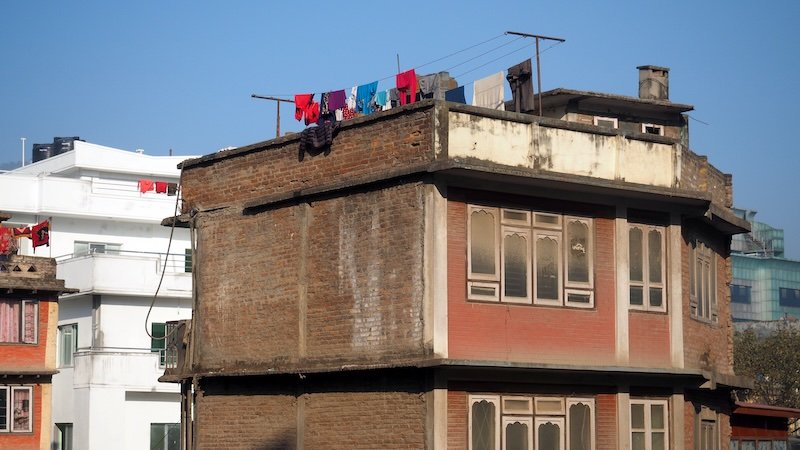
Where To Stay: Neighbourhoods At A Glance
| Area | Vibe | Why Stay | Good For |
|---|---|---|---|
| Thamel | Traveller hub, lively | Restaurants, gear shops, tour desks, cafés | First-timers, solo travellers |
| Lazimpat | Leafier, calmer | Embassy row, mid-range to upscale hotels | Couples, quiet nights |
| Patan (Lalitpur) | Historic & artsy | Patan Durbar Square, brass/wood workshops | Culture lovers |
| Boudha | Sacred & serene | Circumambulate the stupa at dusk | Spiritual stays, slow mornings |
| Bhaktapur | Medieval time-warp | Dawn photography, old-world lanes | Architecture geeks, families |
I based in north Thamel—easy for food runs and day trips, yet quiet enough to sleep.

Eat & Drink: Beyond Momos (But Also… More Momos!)
- Dal Bhat: Lentils, rice, veg, pickles—and refills. Excellent trekking fuel.
- Newari cuisine: Try bara (lentil patties), choila (spiced grilled meat), yomari (sweet rice dumplings with molasses).
- Thakali set: A polished take on dal bhat with buckwheat roti and ghee.
- Street sips: Lassi (sweet or salted), masala chia (spiced tea—yes please).
- Sweet things: Sel roti (ring-shaped rice bread), juju dhau (Bhaktapur’s king curd).
Hygiene tips: Follow your nose; busy stalls turnover food quickly. Ask for no ice, stick to peeled fruit, and carry hand gel (many washrooms lack soap).
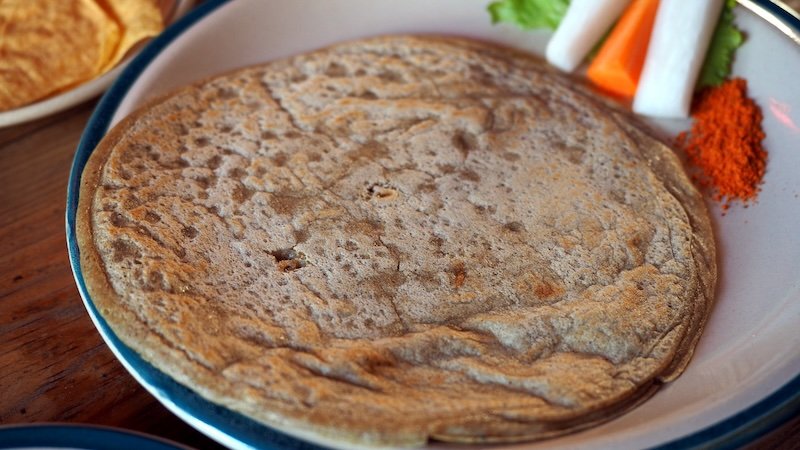
Temple, Stupa & Ghat Etiquette
- Dress modestly: Shoulders/legs covered at major temples/ghats.
- Shoes off: Always before entering a shrine; watch for signs.
- Clockwise, always: Circumambulate stupas and spin prayer wheels to your right.
- Photos: Ask before photographing people, never at cremations unless explicitly invited by a guide (and even then, be gentle).
- Hands & feet: Use your right hand to give/receive; avoid pointing feet at altars.
- Donations: Small cash offerings are appreciated; avoid feeding monkeys.
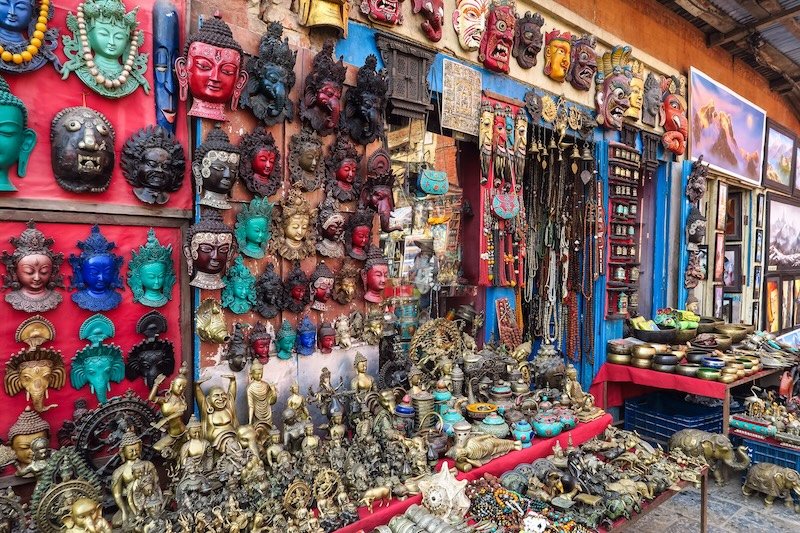
Shopping, Souvenirs & Not Getting Carried Away
- What to buy: Singing bowls, pashmina/cashmere (check quality), thangka art, prayer flags, hand-beaten brass, juniper incense, trekking gear (for rent or to buy), juju dhau bowls (eat the yogurt first!).
- Where to browse: Asan/Indra Chowk (local life + spice), Thamel (souvenirs), Patan (artisan workshops).
- Bargaining: Start at ~60% of the first quote; smile, keep it light, and walk away if needed—half the shops sell similar items.
Kathmandu vs Patan vs Bhaktapur: Which Durbar Square?
| Durbar Square | Signature Feel | Highlights | Good To Know |
|---|---|---|---|
| Kathmandu | Grand & bustling | Kumari House, Taleju (view from outside), Hanuman Dhoka | Post-earthquake restoration ongoing; hire a guide for context |
| Patan | Artistic & compact | Golden Temple, Patan Museum (beautiful), Krishna Mandir | Fab cafés + craft shops nearby |
| Bhaktapur | Medieval & atmospheric | Nyatapola Temple, pottery square, 55-Window Palace | Small city entry fee applies; magical at dawn |
If you only add one more, make it Patan for art and museum curation, or Bhaktapur if you want that time-capsule feel.
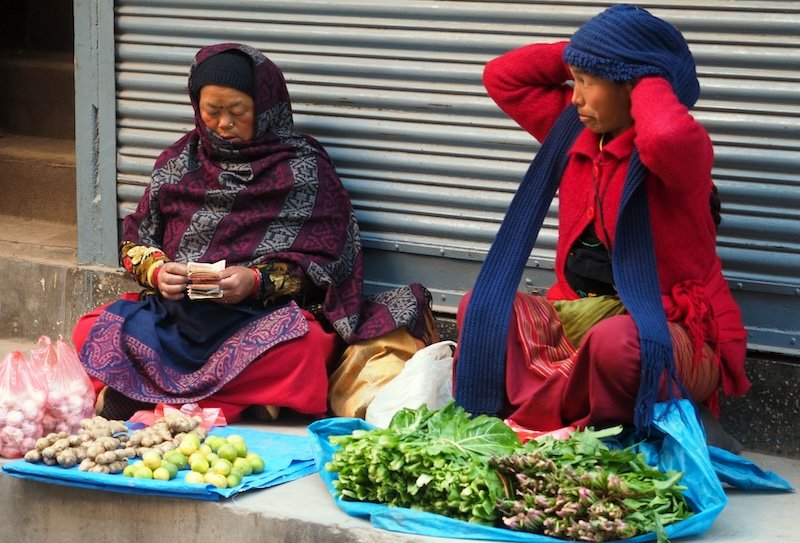
What Will It Cost? (Rough Daily Budget)
- Shoestring (shared hostel / local eats / walking): $20–35 USD
- Mid-range (guesthouse / cafés + nice dinner / taxis): $40–80 USD
- Comfort (boutique hotel / guided tours / lounges): $90–150+ USD
Sample costs:
- Momos: 150–400 NPR | Lassi: 120–250 NPR | Café meal: 400–900 NPR
- City taxi: 300–800 NPR | Admission (major sites): 200–1,500 NPR
- SIM + data (airport or city kiosk): affordable and worth it for maps.
ATMs can be temperamental. Bring a backup card and some cash (USD/EUR) to exchange in Thamel if machines are down.
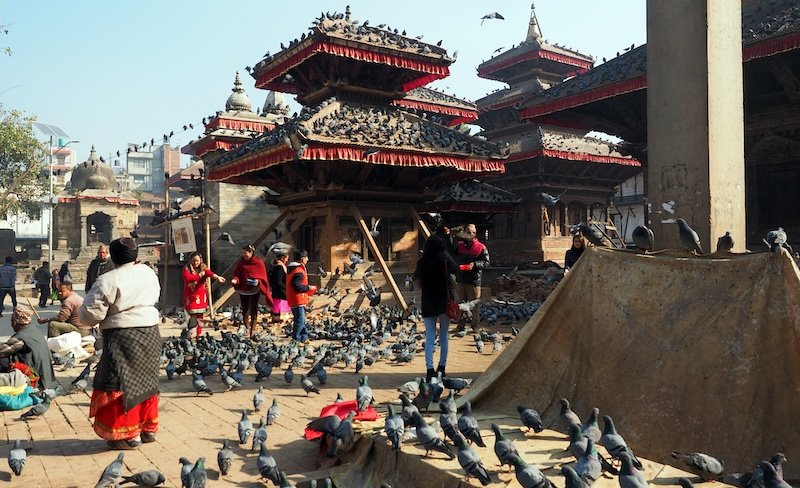
Easy Kathmandu Itineraries (1–3 Days You Can Actually Do)
1 Day: Greatest Hits Loop
Morning:
- Kathmandu Durbar Square (go early for softer light), peek at Kumari Ghar, and wander lanes to Asan/Indra Chowk for spice piles and sari shops.
Lunch:
- Thamel—dal bhat or a momo flight.
Afternoon:
- Swayambhunath (Monkey Temple)—climb the 350 steps, circle the stupa clockwise, views for days.
Sunset/Evening:
- Garden of Dreams tea break, then dinner in Thamel (pumpkin momos? yes).
2 Days: Add Boudha & Pashupatinath
Day 1: As above.
Day 2:
- Boudhanath Stupa (slow circumbulation with locals, rooftop coffee with a stupa view).
- Walk or taxi to Pashupatinath (hire a guide; be mindful around the ghats).
- Dinner in Patan—take a taxi over the river and enjoy the square lit up.
3 Days: Craft & Calm
Day 3:
- Patan Museum + Golden Temple (Hiranya Varna Mahavihar) in the morning.
- Lunch in Patan’s cafés.
- Swing by Kirtipur for a hilltop town vibe or shop Asan’s lanes with intention.
Bonus Sunrise/Sunset Ideas
- Nagarkot sunrise (if you’ve got a pre-dawn run in you).
- Swayambhunath or Boudha at golden hour for prayer flags glowing.
Day Trips You’ll Talk About For Years
- Bhaktapur: A full-day medieval wander. Try king curd and watch potters at work.
- Patan (Lalitpur): Museums + artisans = culture-rich half day.
- Nagarkot: Weather-dependent sunrise views to the Himalayas; combine with a light village walk.
- Chandragiri Hills: Cable car + big valley panoramas; easy half day.
- Panauti or Bungamati/Khokana: Peaceful Newari towns; great for a slow cultural day.
Roads can be bumpy; start early and keep plans flexible if there’s traffic or a festival procession (you’ll probably end up joining it…).

Handy Checklists You’ll Actually Use
Temple & Stupa Etiquette (Pocket List)
- Shoes off, shoulders/legs covered
- Clockwise circumbulation
- Right hand for offerings
- Ask before photos, especially of people
- Keep voices low, phones on silent
Daypack Essentials
- Light scarf / mask
- Hand gel + tissues/TP
- Sunscreen & hat
- Phone with offline maps, battery pack
- Small bills for taxis/tips
- A spare zip-bag (dust + souvenirs!)
Festival Cheat Sheet (Dates Shift Each Year)
- Holi (Feb/Mar): Colourful chaos—protect camera/phone in plastic.
- Bisket Jatra (Apr): New Year in Bhaktapur—huge chariots, wild energy.
- Buddha Jayanti (Apr/May): Peaceful lamps at stupas.
- Indra Jatra (Aug/Sep): Chariots through Kathmandu; Kumari sightings.
- Dashain & Tihar (Sep–Nov): Family gatherings, tika blessings, lights everywhere.
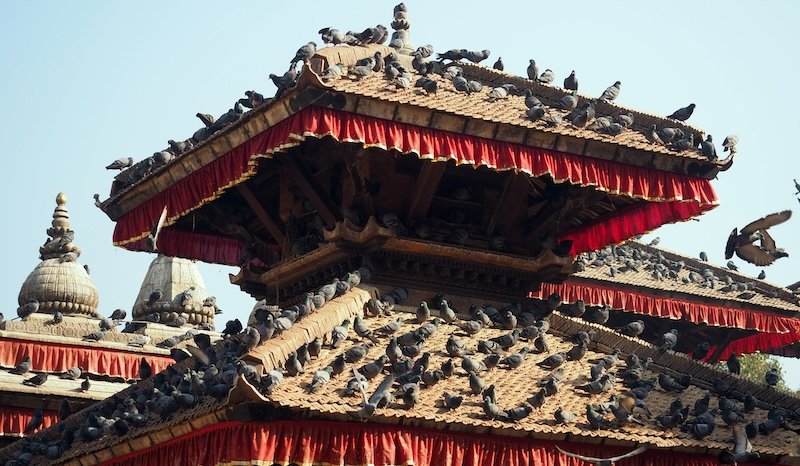
FAQ — Your Kathmandu Travel Questions Answered
How many days should I spend in Kathmandu?
Three days lets you see Durbar Square, Swayambhunath, Boudhanath, Pashupatinath and either Patan or Bhaktapur at an unhurried pace. With just one day, do Old Town + Swayambhunath and a dusk loop around Boudha.
Is Kathmandu safe for solo travellers?
Yes—with normal city smarts. Keep valuables zipped, avoid wandering unlit alleys late, and arrange trusted taxis through your hotel at night. The hassle factor is low once you step off the main drags.
What should I wear at temples and ghats?
Modesty wins: cover shoulders and knees, remove shoes before stepping onto temple platforms, and carry a light scarf. Skip shorts at cremation sites and put the camera away there.
Can I drink the tap water?
No—stick to filtered or bottled. Many hotels and cafés offer filtered refills; carry a reusable bottle and keep hydrated (it’s easy to forget at altitude/light activity).
What’s the best way to handle money?
ATMs work…until they don’t. Have a backup card and some USD/EUR for exchange in Thamel. Cards are accepted in many cafés/hotels, but cash is king in markets and for taxis.
Do I need a guide at Pashupatinath and the Durbar Squares?
Highly recommended. A good guide helps with where to stand, what’s appropriate, and the layers of meaning you might miss. You can hire one at the gate or through your hotel.
Where can I try authentic Newari food?
Patan and Bhaktapur have excellent Newari kitchens; look for small family-run places near the squares. Try bara, choila, samay baji and finish with yomari if it’s in season.
What’s the best sunrise/sunset spot in the city?
Swayambhunath glows at golden hour; Boudhanath at dusk is quietly magical. For a big-sky sunrise and you’ve time, Nagarkot is worth the early alarm when skies are clear.
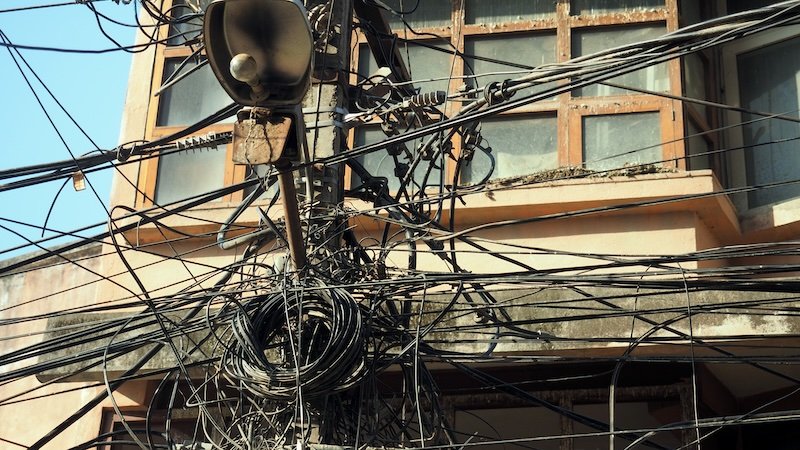
Is the air quality really that bad?
It can be dusty, especially in dry months and on main roads. A lightweight mask helps, as do sunglasses and a dab of moisturiser. Once you’re in courtyards/parks, it’s far gentler.
Can I rent or buy trekking gear in Kathmandu?
Absolutely. Thamel has new and rental gear: sleeping bags, poles, down jackets. Quality varies; check zips and seams and layer smart. For multi-day treks, bring broken-in boots from home.
Any etiquette around prayer flags and wheels?
Prayer flags are not souvenirs from sacred sites—buy your own in markets. Spin prayer wheels clockwise and walk around stupas the same way, keeping the stupa to your right.
What’s one thing I shouldn’t miss beyond the big three sights?
Patan Museum for exquisite curation in a serene palace setting or a slow morning at Boudhanath watching life revolve (literally) around the stupa over a pot of masala tea.
What else would you add to this Kathmandu travel guide?
Do you have any other travel tips to share?

What a fantastic guide to this fascinating place, I have always had this on my bucket list of places to visit. Thanks for the post and lovely tips.
I would love to visit Nepal one day. Kathmandu seems amazing!
Que cidade incrível! è tudo muito diferente do que estamos acostumados a ver aqui no Brasil.
Adoraria conhecer!
Thank you for the useful post, I am going to Nepal on 16 August 2018. I will post my experience later.
Looking forward to visiting Nepal for two week in April. I am taking my 16 year old son and he has never been overseas before, so I think it will be a great eye opener for him. Thank you for some of your tips.
Hi, I’m 25 years old and I’m visiting kathmandu this month with my mother and grandma. Can you recommend some places we could visit as a trio and some place where I could go by myself while my grandma stays in the hotel to avoid her the tedious and tiring walks.
Thanks. Loved your written experience.
This is the best guide on Kathmandu traveling, thank you so much for this amazing information and photos. I liked it and can’t wait to see that place.